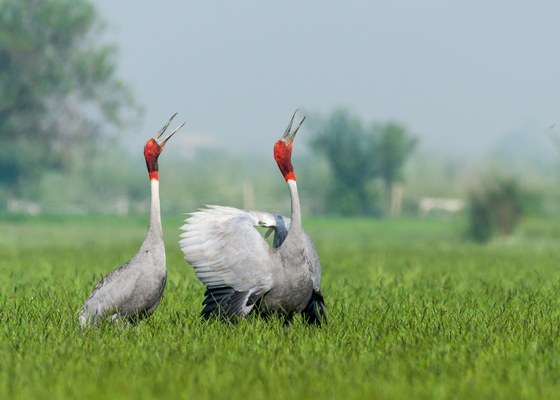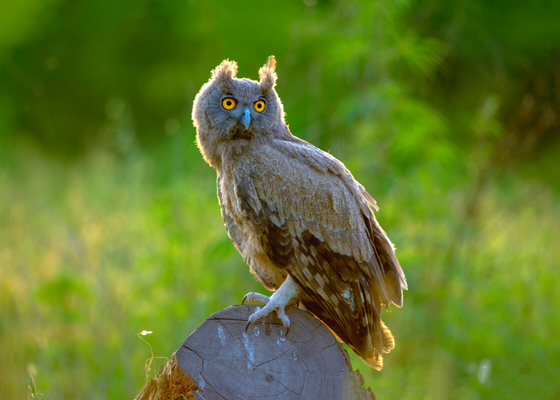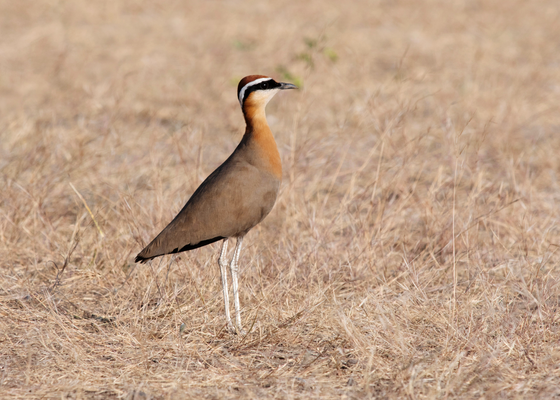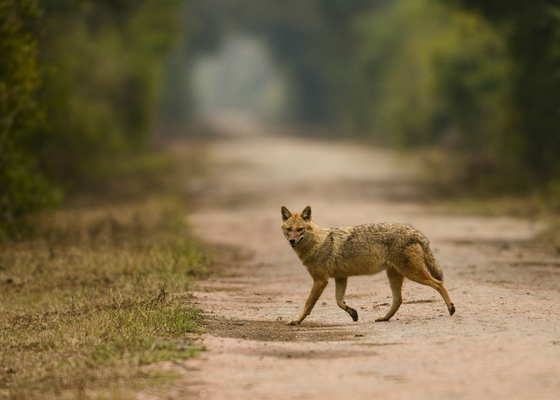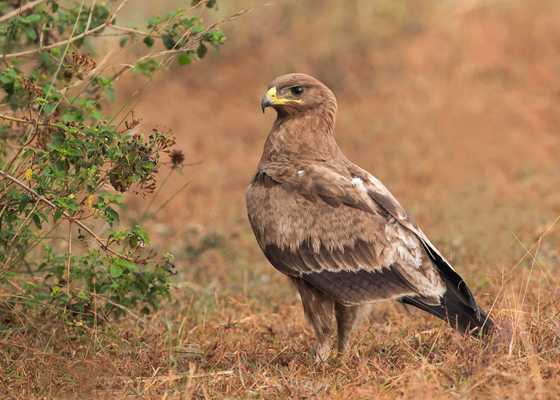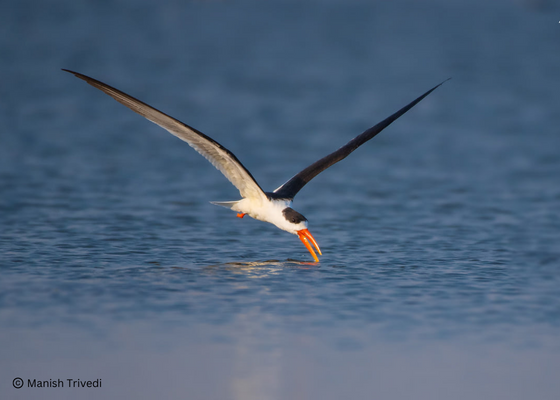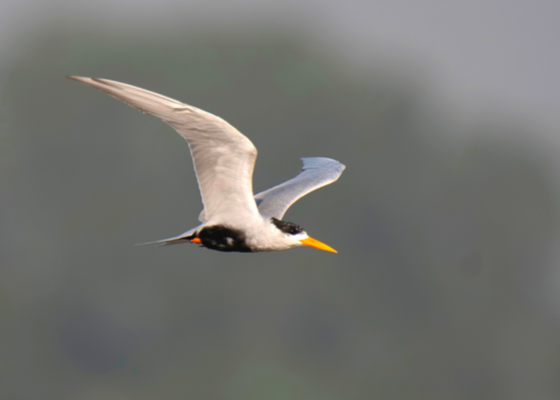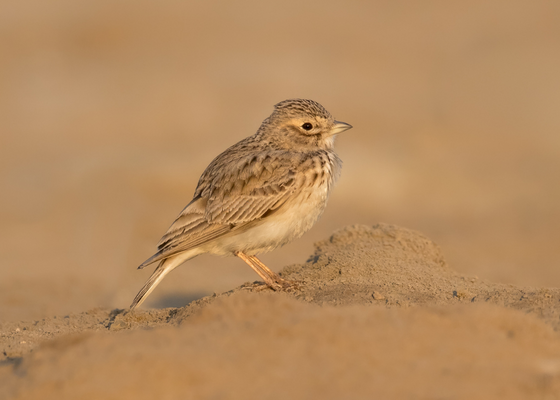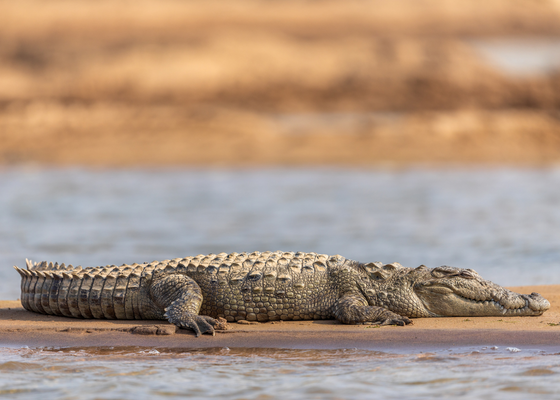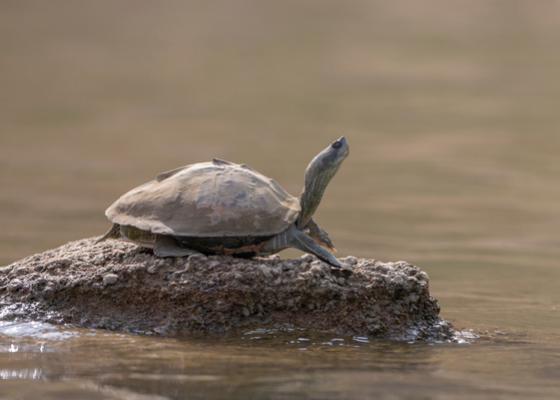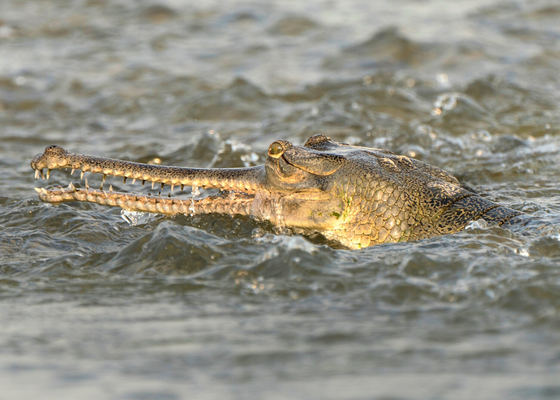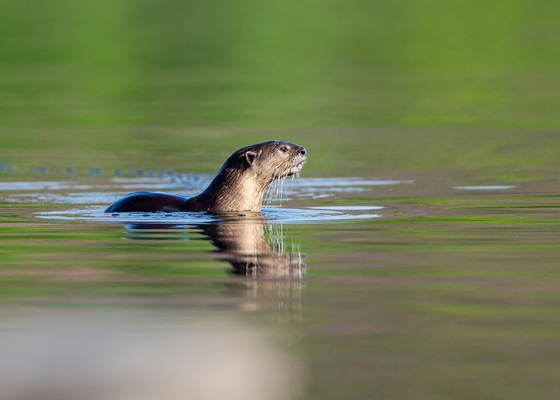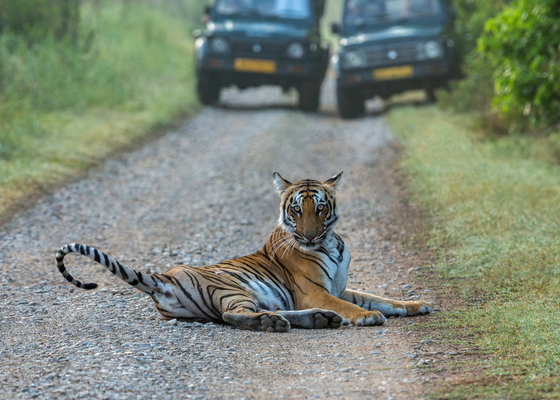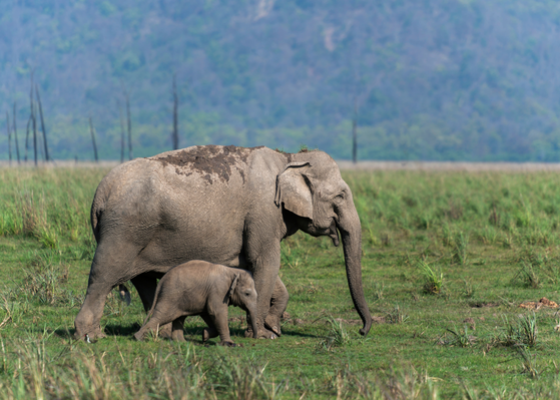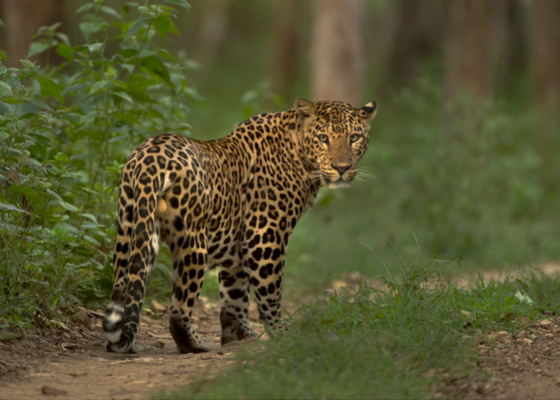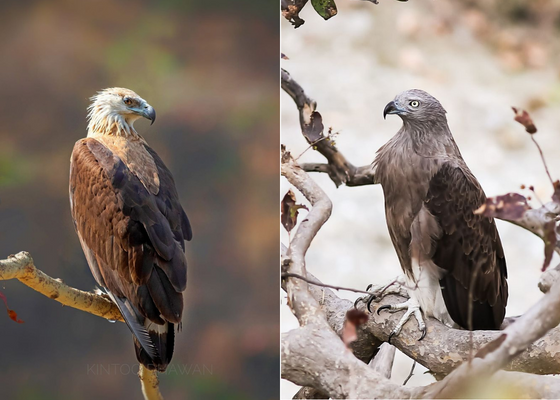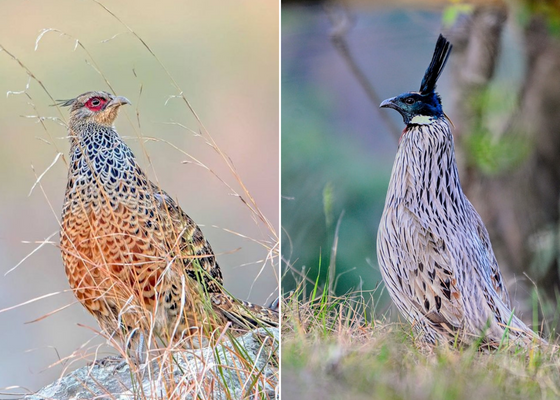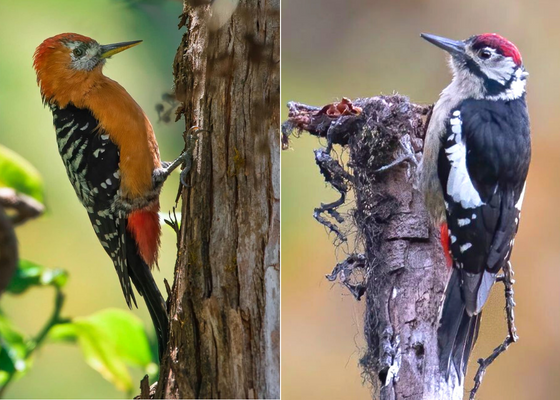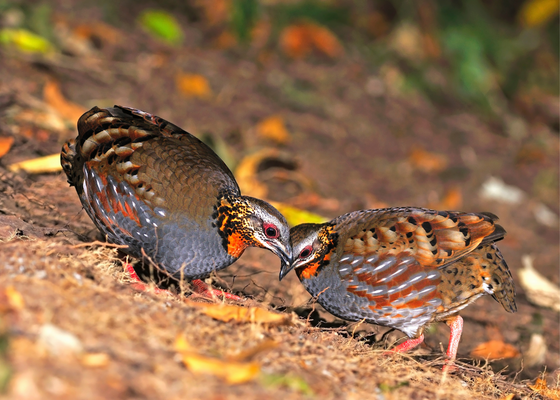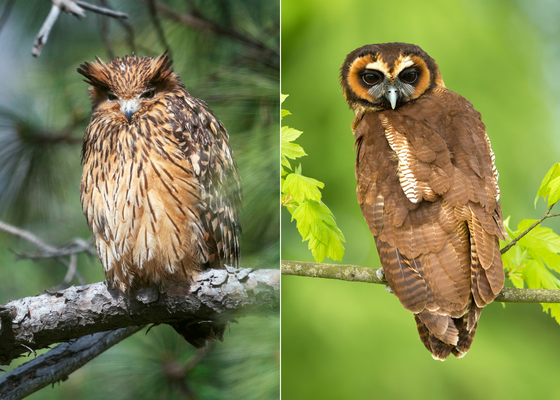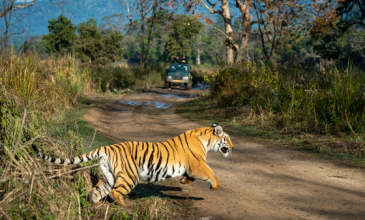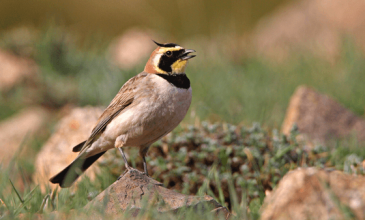- Home
- North India Birds and Mammal Watching – 350 Species in 2 Weeks
North India Birds and Mammal Watching – 350 Species in 2 Weeks
-
14N/15D
-
starting point:
Delhi -
ending point:
Delhi -
Use Calculator
Rs. Rs.
Tour Details
This tour takes you to the best birding sites of North India such as Sultanpur Bird Sanctuary, Keoladeo National Park, National Chambal Sanctuary, the Himalayan Foothills near Nainital & the best Tiger Park of Uttarakhand i.e. Corbett National Park along with the ‘must do’ visit to the iconic Taj Mahal. One can get over 350+ species of birds on this trip. It encompasses the varied landscapes and experiences that North India offers. These features make this tour very fruitful and popular.
- Itinerary
-
Day 01: Arrive in Delhi
Day 02: Delhi to Bharatpur
Day 03: Bharatpur
Day 04: Bharatpur to Chambal
Day 05: Chambal to Agra to Delhi
Day 06: Delhi to Corbett National Park
Day 07: Corbett National Park
Day 08: Corbett National Park
Day 09: Corbett National Park to Pangot
Day 10: Pangot
Day 11: Pangot
Day 12: Sat Tal
Day 13: Sat Tal
Day 14: Sat Tal to Delhi
Day 15: Delhi to Departure - Highlights
-
- A large list of bird species of the Himalayan region
- Himalayan views
- Farm fresh Indian meals
- Quaint lodges and camps
- Easy birding
- A large variety of other mammals
- Great birding in scrubland, wetlands, and Riverine Eco-system
- Sightseeing is possible
- Option of visiting the iconic Taj Mahal
- Glimpses of the beautiful landscape, architecture, and lifestyle of North India
- FAQs
-
What is the best time of year to visit these birding and wildlife destinations?
The best time to visit is from November to March. During these months, the weather is pleasant, and migratory birds are at their peak. The cooler temperatures make wildlife more active, and this period coincides with the arrival of migratory species from Central Asia, Europe, and Siberia, particularly in birding hotspots like Bharatpur and Sultanpur Lake.What kind of clothing should I pack for the trip?
Pack lightweight, breathable clothing in neutral colors to avoid disturbing wildlife. Include a warm jacket for cold mornings and evenings in the Himalayas, a rain jacket for unexpected showers, and sturdy walking shoes or hiking boots. Bring a hat, sunglasses, and sunscreen for sun protection, as well as insect repellent to ward off mosquitoes. It’s also advisable to pack a set of binoculars and a reusable water bottle.What photography equipment is recommended for this trip?
A DSLR or mirrorless camera with telephoto lenses (200-500mm) for bird and wildlife photography is recommended. A wide-angle lens is useful for landscapes, especially in places like the Himalayan foothills and the wetlands of Bharatpur. A sturdy tripod will help stabilize your camera for sharp images, particularly in low-light conditions. Extra batteries, memory cards, and a lens cleaning kit are essential for ensuring you don’t miss any shots.Do I need any special permits to visit these wildlife areas?
Yes, certain areas, especially national parks like Ranthambore and Corbett, require permits for entry and safaris. These permits are often limited in number to control the environmental impact. We will arrange these permits for you in advance, but it’s essential to carry valid identification documents such as a passport or driver's licence for verification purposes.Are there guided tours available at these destinations?
Yes, our guided tours are led by experienced naturalists and local experts are available at all destinations. These guides are knowledgeable about the local flora and fauna and can greatly enhance your bird-watching and wildlife-viewing experience by helping you spot elusive species and providing valuable insights into their behaviors and habitats.What kind of accommodation can I expect during the trip?
Accommodations range from comfortable hotels in cities to rustic lodges and guesthouses near wildlife sanctuaries. These lodgings offer basic amenities such as clean rooms, hot water, and dining facilities. They are selected for their proximity to nature and provide a balance between comfort and immersion in the local environment.How physically demanding is this itinerary?
The itinerary involves moderate physical activity, including walking on trails, climbing small hills, and occasional long drives. Participants should be in good health and prepared for varying weather conditions and terrain. Activities are designed to be manageable for most fitness levels, but it’s advisable to consult with your doctor if you have any pre-existing health conditions.What species of birds and mammals can I expect to see?
In Sultanpur Lake and other Delhi sites, expect to see Sarus Crane, Greater Flamingo, Northern Pintail, and various herons and kingfishers. At Ranthambhore, you may spot the Bengal Tiger, Indian Leopard, Marsh Crocodile, and birds like Painted Spurfowl and Indian Pitta. Bharatpur is renowned for the Painted Stork, the Asian Openbill, and the endangered Black-necked Stork. In Chambal, look for Indian Skimmer, Black-bellied Tern, Gharial, and Gangetic Dolphin. Corbett is home to the Bengal Tiger, Asiatic Elephant, Great Hornbill, and Pallas's Fish Eagle. In Pangot, you can find Cheer Pheasant, Koklass Pheasant, Himalayan Griffon, and Lammergeier.Are there opportunities for night photography or nocturnal wildlife viewing?
Some lodges and parks offer night walks or safaris to spot nocturnal wildlife such as owls, nightjars, and foxes. Night photography requires specialized equipment like a tripod and a camera with good low-light capabilities. Guides will provide tips on how to capture the best shots without disturbing the wildlife.What safety measures are in place during safaris and walks?
Safety measures include traveling with experienced guides, following park rules, staying within designated areas, and avoiding approaching or feeding wild animals. It’s important to wear appropriate clothing and footwear, carry sufficient water, and use insect repellent. Guides will provide safety briefings before each activity, ensuring you are aware of the protocols to follow in case of any unexpected encounters.How do I maximize my chances of seeing the Ibisbill and other key species?
The best chances of seeing key species are during early morning and late afternoon safaris when animals are most active. Ibisbill is best seen on Kosi River at Corbett National Park. Staying quiet, being patient, and following the guide’s instructions are crucial. Using binoculars and scopes can also help spot distant birds. Understanding the habitats and behaviors of your target species, often shared by your guide, can significantly increase your chances of sightings.What kind of meals are provided during the tour?
Meals typically include a mix of Indian and continental cuisines, prepared with fresh, locally sourced ingredients. Breakfasts are often early and can be packed to take along for morning activities. Lunch and dinner are usually served at your accommodation or at designated dining areas within the parks. Special dietary requirements can be accommodated with prior notice, ensuring that vegetarians, vegans, and those with food allergies can enjoy their meals without concern.Can I charge my electronic devices at the accommodations?
Most accommodations provide facilities to charge electronic devices. It’s advisable to carry a universal adapter and extra batteries or power banks for remote locations where electricity might be less reliable. Many lodges and guesthouses are equipped with backup generators to ensure a continuous power supply, allowing you to keep your cameras, phones, and other devices charged throughout your stay.Is it safe to drink tap water in these locations?
It is recommended to drink bottled or filtered water to avoid any health issues. Most accommodations provide safe drinking water, either bottled or through water purification systems. It's wise to carry bottled water during excursions and to avoid ice in drinks from local vendors. Bringing a personal water filter or purification tablets can be a good backup measure.Are restroom facilities available during safaris and long drives?
Restroom facilities are available at lodges and designated areas in national parks. During long drives, your guide will make stops at clean and safe facilities. It’s advisable to use the facilities before setting out on long safaris, as options may be limited once you are deep within the park.What should I do if I encounter dangerous wildlife?
Restroom facilities are available at lodges and designated areas in national parks. During long drives, your guide will make stops at clean and safe facilities. It’s advisable to use the facilities before setting out on long safaris, as options may be limited once you are deep within the park.Can I bring my children on this tour?
Children are welcome on private tours. The itinerary includes activities that require patience and quietness, which may be challenging for very young children. Older children with an interest in wildlife and photography will enjoy the experience. Activities can often be tailored to suit families, and some lodges offer special programs for young wildlife enthusiasts, making it an educational and enjoyable trip for all ages.How do I prepare for the varying climates across different destinations?
Prepare for varying climates by packing layered clothing for warmth in the mornings and evenings, light clothing for the heat of the day, and waterproof gear for unexpected showers. Staying hydrated is crucial, so carry a reusable water bottle. Sun protection, including sunscreen, sunglasses, and hats, is essential. Consulting a local weather forecast before packing can help ensure you are prepared for the specific conditions you’ll encounter.What are some tips for ethical wildlife photography?
Maintain a safe distance from wildlife to avoid disturbing their natural behaviours. Do not use flash photography, as it can startle animals and birds. Follow park regulations and guidelines provided by your guide. Respect the habitats by not littering or damaging vegetation. Capturing images ethically ensures the welfare of wildlife and allows future visitors to enjoy similar experiences.How do I contribute to conservation efforts during my trip?
Support local conservation initiatives by visiting parks and sanctuaries that actively participate in conservation efforts. Follow guidelines to minimize your impact, such as staying on designated paths and not disturbing wildlife. Use eco-friendly products to reduce waste, and respect local communities and their traditions. Consider making donations to conservation programs or participating in volunteer opportunities if available. Your responsible behavior and support can help preserve these ecosystems for future generations.What type of transportation is provided during the trip?
Transportation is typically provided by comfortable, air-conditioned vehicles for long drives between destinations. Within national parks, open jeeps or canter vehicles are used for safaris, offering the best visibility for wildlife viewing. These vehicles are equipped to handle the rough terrain and provide a safe and comfortable ride.Can I rent photography equipment locally if needed?
While it's best to bring your own gear, some major cities like Delhi may have rental services for photography equipment. However, availability can be limited, so it’s recommended to bring your own equipment to ensure you have what you need. If you do decide to rent, check the quality and condition of the equipment before use.How can I ensure my safety from wildlife-related incidents?
To ensure safety, always follow the instructions of your guide, stay within designated areas, maintain a safe distance from wildlife, and avoid making loud noises or sudden movements. Guides are trained to handle wildlife encounters and will keep you informed about safety protocols. In case of an unexpected encounter, staying calm and following the guide’s directions is crucial. Additionally, avoid wearing strong perfumes or bright clothing that might attract animals, and carry a whistle or personal alarm to attract attention if needed.Are there opportunities to interact with local communities during the trip?
Yes, certain parts of the itinerary include interactions with local communities. For example, you can visit villages near Pangot and SatTal to learn about the local culture, traditional crafts, and their role in wildlife conservation. These interactions provide a deeper understanding of the region’s cultural and ecological context. Participating in community-based tourism initiatives can also support local economies and conservation efforts.What are some must-have items to bring for this trip?
Must-have items include binoculars, a good field guide for birds and mammals, a notebook and pen for jotting down sightings, a reusable water bottle, insect repellent, a first aid kit, a universal power adapter, a flashlight, and comfortable, weather-appropriate clothing and walking shoes. Additionally, having a power bank and extra memory cards for your camera is essential for uninterrupted photography. A hat, sunscreen, and sunglasses are also important for protection against the sun. - Services Included
-
- Accommodation on a twin / Single sharing basis
- All meals as per the itinerary
- Arrive and departure transfer in Delhi
- Visit Sultanpur with a park entrance fee
- Rickshaw ride in Bharatpur for 02 days (01 rickshaws for 02 guest basis)
- Park entrance fee of Bharatpur for 02 days (once a day only)
- One Boat cruise on the Chambal River
- Park entrance fee of Chambal
- Exclusive 4WD in Corbett for Dhikala visit
- Dhikala park entrance fee, permit,s and park mandatory wildlife guide
- Birding in Pangot and Sat Tal
- Dedicated air-conditioned transport
- Services of Asian Adventures Birding guides
- Monument guide in Agra for Taj Mahal visit
- Park wildlife guide (mandatory) for safaris in Corbett
- All taxes
- Services Not Included
-
- Optional tours, tips, laundry, drinks, camera fee, monument entrance fee, few meals
- International Airfare, visa, and insurance
- Any other services not specified in cost inclusions
- Tours Map

